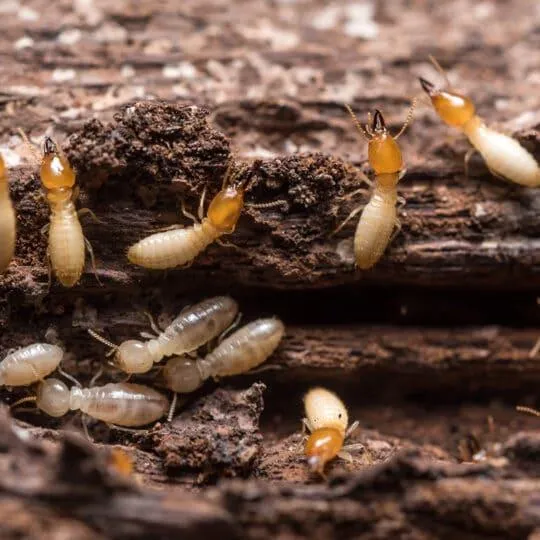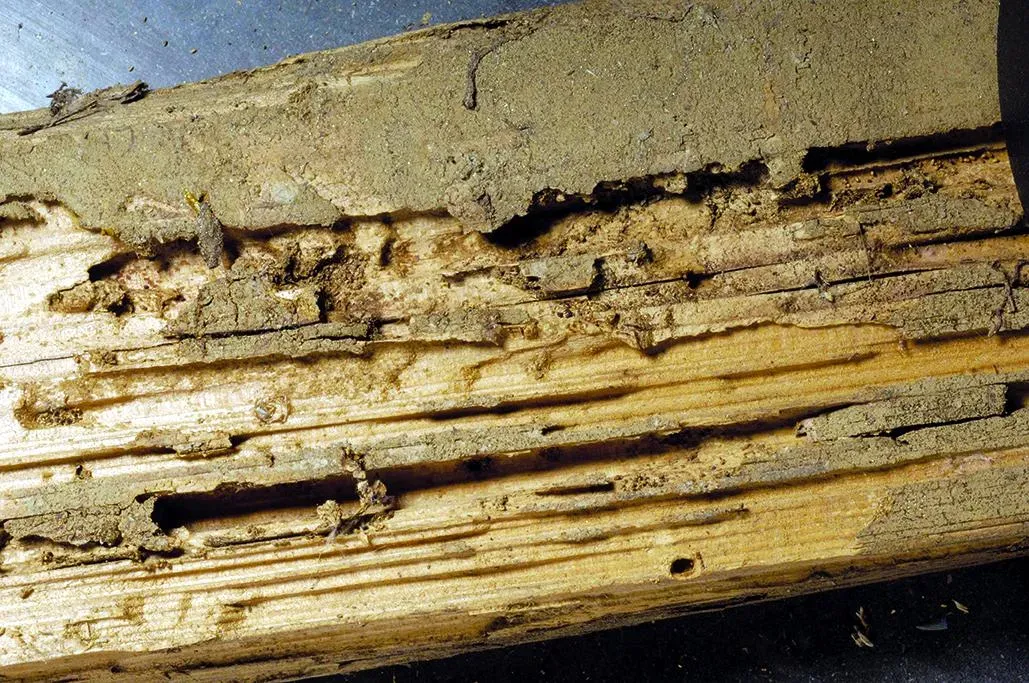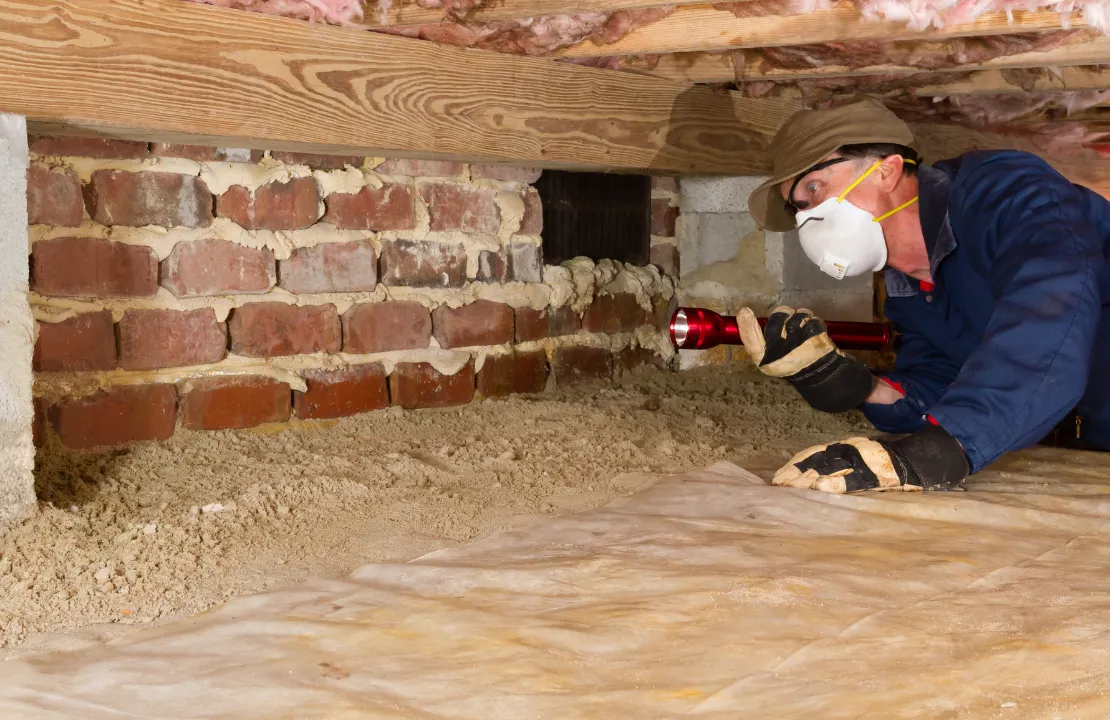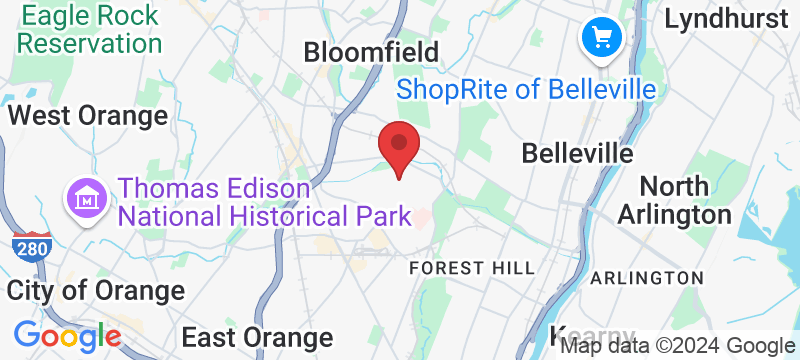Wood Destroying Insect (WDI) Inspections
AllIn1Inspections LLC is prepared to examine your home for Wood Destroying Insects and Organisms. The examination is an intensive visual investigation around the foundation inside and out, in crawl spaces, in living spaces, in attic spaces and in the attached/detached garage. We document our findings in the form of a written report that will conclude one of the following:
>> No Prior Evidence of Infestation
>> Prior Evidence of Infestation
>> Evidence of a Current Infestation
The examination takes about 15 to 20 minutes and is scheduled with the Home Inspection or separately.

What are Termite swarms?
During late winter or early spring, swarms of the reproductive caste may be noticed in outdoor areas or in infested buildings. These black, winged termites are the stage most commonly seen, since the other castes do not willingly expose themselves to light. Winged termites are attracted to light, and when they emerge within buildings, they swarm about doors and windows. After crawling or fluttering about for a short time, the termites break off their wings and locate a mate. Each pair attempts to locate moist wood in contact with the soil to start a new colony, but few succeed. Although they alarm the homeowner and can be a nuisance, no damage is done by the winged forms.

There are a variety of termites in the United States but they all have one thing in common: left alone, they’ll eat you out of house and home. The most common varieties, subterranean termites, consist of a queen, king, reproductives, workers, and soldiers.
What do termites eat?
Termites eat cellulose, the basic building block of wood. Millions of homes in north America are built of wood, and if left unprotected or monitored, can fall prey to termite attack.
How do I know when I have a termite problem?
Most homeowners will rarely see termites. These are secretive, cryptic insects that hide deep in wood or soil. However, during the spring and into the fall (depending of the species), termite colonies produce swarmers. These swarmers are new kings and queens. Their job is to start new colonies. Don’t worry, more than 99% will die in the first few days of life (birds, other insects, and a hostile environment all take their toll). Sometimes, for subterranean termites, you may also notice their shelter tubes. These tubes are about the diameter of a pencil (sometime larger) and are made of soil. If you break one open, you may see a live termite inside! Dry wood termites will produce granular pellets, they look allot like large grains of pepper. However, they can vary in color. If you look closely with a hand lens, you can see the ridges on individual pellets. These ridges are diagnostic for dry wood termites. Of course, if you are seeing mud tubes, swarmers and pellets in all rooms of the house, its’ definitely a problem and time to seek professional help. Real estate transfers may also require a termite inspection (normally these are highly recommended from lending institutions, they are not mandated by law).

Finding signs of termite activity in your yard should not alarm you. Termites in and about the yard is normal and you will see these signs from time-to-time. Of course, if you do notice termite activity in the yard that appear odd or alarms you, seek out professional pest control help.
Can anything be done to prevent termites?
Termites are only a problem if they gain access to wood, particularly those wooden members that make up our homes and surrounding decks and fences. Scrap wood, firewood, or cardboard lying under homes in sub-areas or near foundations walls can be a source of subterranean termite attack. All cellulose materials in soil-contact need to be removed. Subterranean and dampwood termites also like water. An additional preventative tactic includes the fixing or removal of sources of water. Leaking pipes, leaky irrigation systems, and over-watered planter boxes may be sources of attraction to termites. Sand barriers, metal barriers, and wood chemically treated have varying levels of success in preventing termite attack.
For dry wood termites, yearly walkabouts of your home looking for piles of pellets is a good preventive practice (remember area between walls and inaccessible locations will be difficult or impossible to visually inspect) If you are not sure if a pile was really produced by dry wood termites, they can be vacuumed or swept away. If the piles reappear, it probably time to seek professional help. Finally, there is some evidence that certain forms of chemically treated wood (pressure-treated and professionally topically applied) can prevent the establishment of new colonies by termite kings and queens.

Get in touch with us!
Email: [email protected]
Phone: (973) 494 3875
Service Area: Essex, Passaic, Union, Bergen, Somerset, Morris, Middlesex, Monmouth, Ocean Counties
FAQS
How often should I mow my lawn?
A1: The frequency of lawn mowing depends on several factors like grass type, season, and desired lawn height. Typically, during the growing season, mowing every 1-2 weeks is recommended. In hot weather, you may need to mow less frequently, while in cooler seasons, you can mow less often.
What's the benefit of lawn aeration and overseeding?
Aeration allows air, water, and nutrients to penetrate the soil, promoting healthier root growth and overall lawn health. Overseeding introduces new grass seed to thicken your lawn, improving its appearance and resilience. Together, they rejuvenate your lawn, making it more resistant to weeds and disease.
How can I ensure an eco-friendly lawn care service?
To ensure eco-friendly lawn care, ask your provider about their practices. Look for companies that use organic or low-impact fertilizers, minimize pesticide usage, and promote sustainable lawn care practices. Regular soil testing and custom treatment plans can also reduce the need for excessive chemicals while maintaining a vibrant lawn.


